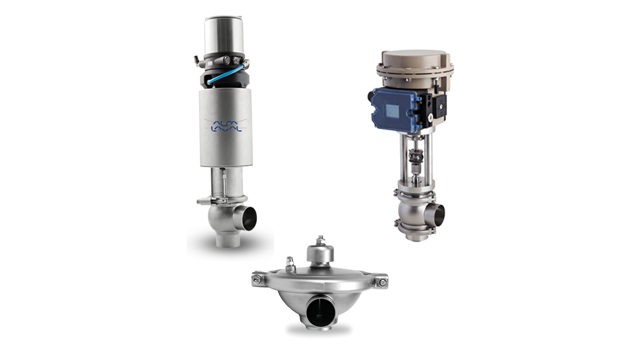Enhancing Functional Effectiveness with Advanced Control Valves
Enhancing Functional Effectiveness with Advanced Control Valves
Blog Article
Achieve Seamless Integration and Control With High Quality Structure Automation Controls
In the realm of contemporary building monitoring, the relevance of top quality structure automation controls can not be overemphasized. As technology remains to breakthrough, the combination and control of numerous systems within a structure have progressed to be more reliable and sophisticated. The seamless operation and tracking of illumination, A/C, safety and security, and other structure functions have become vital for enhancing occupant comfort, power efficiency, and total functional performance. The journey in the direction of achieving true combination and control is a diverse one, with factors to consider varying from system compatibility to cybersecurity. Embracing quality structure automation controls is not just a matter of benefit yet a strategic critical for companies intending to enhance their facilities' performance and sustainability.

Evolution of Structure Automation Controls
Throughout the past few years, the advancement of constructing automation controls has considerably changed the way buildings are handled and operated. Constructing automation systems largely focused on basic features such as regulating air, air flow, and home heating conditioning (HEATING AND COOLING) systems. As innovation progressed, these controls have become more sophisticated, enabling for a larger variety of building systems to be incorporated and handled centrally.
The development of developing automation controls has actually seen a change towards even more smart systems that can adapt to altering conditions in real-time. This flexibility is critical for maximizing power performance and ensuring owner comfort. Furthermore, contemporary structure automation controls currently offer functions such as predictive maintenance, remote tracking, and information analytics, enabling center managers to make data-driven choices to enhance structure performance.

Benefits of High Quality Integration
The innovation in building automation controls towards more smart systems has highlighted the significant benefits of top quality integration in enhancing building operations and boosting overall performance. This central control also provides better exposure and insights into building efficiency, enabling aggressive maintenance and optimization techniques. In general, the advantages of quality integration in building automation controls are undeniable, offering enhanced effectiveness, convenience, and functional performance.
Improved User Experience and Availability
Enhancing individual communication with structure automation controls through intuitive style and boosted availability elevates the general experience for owners and center supervisors alike. By focusing on customer experience, building automation systems can come to be more easy to use and reliable. User-friendly user interfaces, clear navigating, and adjustable settings empower users to connect with the controls easily and properly.
Availability functions play an essential role in making sure that all individuals, consisting of those with specials needs, can use the building automation manages with simplicity. Including features such as voice commands, tactile buttons, and color-contrasted displays can boost ease of access and make the controls extra comprehensive.
Furthermore, enhanced customer experience results in higher user contentment, raised performance, and far better decision-making. Passengers can readjust ecological settings according to their preferences, while center managers can successfully manage and check building systems - control valves. Generally, prioritizing customer experience and access in structure automation controls adds to an extra smooth and efficient building setting for all stakeholders included
Lasting Practices Through Automation

Furthermore, automation can facilitate the assimilation of sustainable power resources such as solar panels or wind generators right into structure procedures. By immediately readjusting power use based on the schedule of renewable resource, buildings can additionally lower their reliance on non-renewable resources. This smooth combination of lasting practices not only benefits the setting but likewise enhances the general operational efficiency view website and cost-effectiveness of the building. With automation, buildings can straighten with modern sustainability goals and contribute to a greener future.
Future Trends in Building Control Systems
One popular trend shaping the future of structure control systems is the raised assimilation of Artificial Intelligence (AI) and equipment learning. Furthermore, the Web of Things (IoT) is reinventing structure control systems by attaching sensors and devices to enhance and streamline operations performance.
Another crucial trend is the focus on cybersecurity procedures to secure versus possible risks to constructing automation systems. As buildings come to be much more interconnected, making sure robust cybersecurity protocols will certainly be necessary to secure delicate information and avoid unauthorized access.
Additionally, the shift in the direction of cloud-based platforms is acquiring energy, enabling systematized control and remote accessibility to building systems. This assists in easier surveillance, maintenance, and updates, enhancing the general efficiency and flexibility of building control systems. As technology remains to advancement, these patterns are anticipated to form the future landscape of structure automation controls, driving advancement and sustainability in the built environment.
Verdict
To conclude, developing automation controls have actually advanced significantly, supplying various benefits such as enhanced customer experience, ease of access, and lasting methods. Quality assimilation plays a vital role in achieving smooth control and effective procedure of building systems. Future fads in structure control systems are likely to concentrate on further boosting try this web-site automation capacities for boosted energy effectiveness and general efficiency. It is important for structure owners and drivers to focus on the fostering of high quality building automation controls to optimize building operations and attain lasting sustainability objectives.
In the realm of modern-day building management, the relevance of top quality building automation controls can not be overemphasized. On the whole, the advancement of structure automation regulates continues to drive innovation in the building management industry, using new possibilities for producing smarter and a lot more lasting buildings.
The improvement in structure automation controls towards more smart systems has actually emphasized the considerable benefits of high quality assimilation in optimizing structure procedures go to this website and improving total performance. Overall, focusing on customer experience and accessibility in building automation regulates contributes to a more efficient and seamless structure environment for all stakeholders included.
It is essential for building proprietors and drivers to prioritize the adoption of top quality structure automation regulates to optimize building procedures and achieve long-lasting sustainability goals. - control valves
Report this page